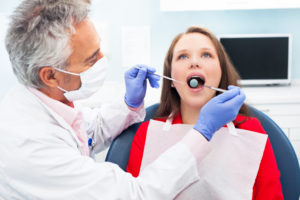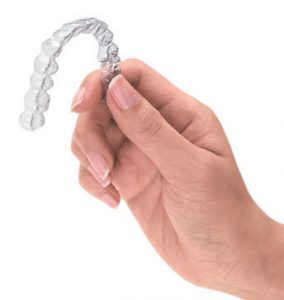 No one needs to be born with a perfect smile when they can simply buy one. Cosmetic dentistry is such a common option now that there’s no reason to suffer in silence and hide your smile anymore. In fact, according to over a decade’s worth of research from the American Academy of Cosmetic Dentistry, 86% of patients opt for cosmetic procedures simply to improve their appearance. Almost 50% of patients get a smile makeover for a special upcoming event and 45% of patients rely on cosmetic dentistry to reverse premature aging or look younger. Lumineers are among the most popular solutions for a quick smile transformation. But what are Lumineers and why can they potentially work for you?
No one needs to be born with a perfect smile when they can simply buy one. Cosmetic dentistry is such a common option now that there’s no reason to suffer in silence and hide your smile anymore. In fact, according to over a decade’s worth of research from the American Academy of Cosmetic Dentistry, 86% of patients opt for cosmetic procedures simply to improve their appearance. Almost 50% of patients get a smile makeover for a special upcoming event and 45% of patients rely on cosmetic dentistry to reverse premature aging or look younger. Lumineers are among the most popular solutions for a quick smile transformation. But what are Lumineers and why can they potentially work for you?
What Are Lumineers
Unless you’ve been living under a rock, you’re likely aware that Hollywood celebrities aren’t born with perfect teeth any more than the rest of us are. But they do have round-the-clock beauty teams, many of which contain dentists that offer the celebrity beauty secret: porcelain veneers. But not everyone can afford the expense or wants the permanence of the original porcelain correctional shells. Meet their cosmetic cousin, Lumineers. Made from the same durable laminate material, Lumineers are about half the width of their predecessors. That means they may be more comfortable and workable for everyday needs.
Lumineers Are Non-Invasive
Traditional veneers are thin in comparison to your natural tooth, but they’re thick enough to require aggressive placement. This always requires removal of some tooth surface to affix the shells. For that reason, traditional veneers are irreversible. However, that’s not the case with Lumineers. The thinner shells can be easily sculpted for a perfect fit and affix right to the existing enamel without any worries regarding tooth removal. And if you change your mind, your Johns Creek Dentist can easily remove them.
Lumineers Are a Durable Investment
Cosmetic dentistry is an investment in personal confidence. And the last thing anyone wants is a shoddy smile makeover. Once you leave your dentist’s office, you should be grinning ear to ear knowing you look as good as you feel. A competent cosmetic dentist can shape, color, mold, and affix Lumineers to help ensure your smile stays beautiful for 10 to 20 years with normal life wear. While Lumineers are less expensive than traditional veneers, they’re still a significant initial financial investment. But considering how long they last and how much enjoyment they provide, they can pretty much pay for themselves over their lifespan.
Lumineers Correct Multiple Issues
There’s no such thing as a magic pill in cosmetic dentistry, but Lumineers may be about the closest thing to one. Stained enamel, chips and cracks, gaps, poor tooth alignment, and misshapen teeth can all be corrected with different and separate procedures. But if you’re dealing with multiple issues or want a quick fix to an otherwise extensive correction, Lumineers can be the solution you’ve been looking for. When you’re ready to change your life for the better, call your Johns Creek Dentist to see if Lumineers are the right fit for your needs.




